Price Points by Omnia Retail

10.03.2025
Competitive Pricing as a Strategy: What Most Businesses Get Wrong in 2025
Your product's price can determine your business's success or failure. A small price difference could win or lose a sale in today's crowded markets, even though competitive pricing might seem simple. Competitive pricing...
Your product's price can determine your business's success or failure. A small price difference could win or lose a sale in today's crowded markets, even though competitive pricing might seem simple. Competitive pricing provides a straightforward way to position products in the market. Many businesses make the mistake of simply copying their competitors' prices. This approach often leads to missed opportunities and lower profits. Smart competitive pricing needs careful price selection based on market competition. The goal isn't to slash profits or start a race to the bottom. This piece reveals common misconceptions about competitive pricing strategies. You'll discover how these strategies work and why pricing software gives you up-to-the-minute data analysis to make smarter pricing decisions. The discussion includes practical examples to help you dodge typical mistakes, plus the pros and cons of competitive pricing. What is Competitive Pricing? Competitive pricing is a strategy where businesses set their prices based on the prices of their competitors. Instead of determining prices solely based on production costs or desired profit margins, companies analyze the market and adjust their pricing to stay competitive. This approach is commonly used in highly competitive industries, such as retail and e-commerce, where price sensitivity plays a crucial role in consumer decision-making. The benefits of competitive pricing The primary benefit of competitive pricing is that it helps businesses attract price-conscious customers and increase sales. By offering prices that align with or undercut competitors, companies can improve their market position and boost customer loyalty. Additionally, this strategy allows businesses to react quickly to market changes, ensuring they remain relevant and appealing to consumers. However, it requires continuous monitoring of competitor pricing to maintain effectiveness. Why Most Businesses Fail at Competitive Pricing Businesses often struggle with competitive pricing because they don't understand the basics. Studies show that competitor-based factors explain 30.2% of price variations in certain markets. Focusing only on competitor prices Your business success faces real risks when you blindly copy competitor prices. You make poor decisions by setting prices without knowing your competitors' strategies or costs. Price wars often start when businesses only try to match or undercut competitors, especially in markets with many competitors or price-sensitive customers. Smart businesses analyze their unique value instead of just matching market prices. Companies that only rely on competitor pricing lose their grip on real market demand over time. Lower prices don't always attract more customers - they can make people doubt your product quality and cut into your profits. Ignoring customer value perception Businesses make a huge mistake when they overlook how customers link price to value. Studies show 71% of shoppers trust the brands they buy from, with Gen Z caring about this the most. Customers judge value based on quality, brand reputation, and their overall experience. Price makes up just one part of the value equation. Research of McKinsey shows customers decide to buy based on what they think they'll get minus what they think they'll pay. The best pricing strategies look at both sides rather than just focusing on costs. Not considering market dynamics The market keeps changing, and so should your pricing strategy. Businesses must keep checking their pricing approaches to stay ahead of competitors. Keep an eye on supply and demand changes that affect pricing, observe customer behavior and market trends, and adjust prices proactively while considering regional differences in perceived value. Retailers who use flexible pricing strategies can increase profits by 5% to 10%. But to keep your competitive pricing strategy working, you need to analyze the market constantly and adapt to new conditions. Key Elements of Successful Competitive Pricing Market positioning is the lifeblood of effective competitive pricing. Your market position helps you make pricing decisions that match customer expectations. Understanding market positioning Your market position shapes how consumers see your brand compared to competitors. You can build a unique identity in the marketplace through product features, price points, and quality indicators. Examples of competitive pricing strategies These effective competitive pricing approaches work well: Price matching: Your prices stay equal to competitors while you highlight unique value Premium pricing: Higher prices show superior quality or exclusive offerings Penetration pricing: Lower prices help gain market share, which works best for new market entrants Research shows that businesses that use dynamic pricing strategies see 5-25% more revenue when they adjust prices based on market demand. Advantages of competitive pricing Competitive pricing helps businesses attract customers by offering prices that align with or undercut competitors. This strategy can increase sales volume, enhance market positioning, and boost customer loyalty. It also allows businesses to stay relevant in highly competitive industries by responding quickly to market fluctuations. Advantages: Makes pricing easier Boosts sales volume Responds fast to market changes Guards market share Disadvantages of competitive pricing While competitive pricing can be effective, it also comes with drawbacks. Focusing solely on competitor prices may cause businesses to overlook critical factors like production costs, profit margins, and customer perception of value. This approach can lead to price wars, reducing profitability and making long-term sustainability more challenging. Disadvantages: Might not cover operating costs Could start price wars Misses customer value perception Wrong pricing happens if competitors make mistakes Your competitive pricing success needs constant market monitoring and smart positioning choices. Good pricing software and market analysis tools help you stay competitive while keeping profits healthy. Real-Time Competitor Pricing Insights As a large retailer or D2C brand, it's vital to monitor supply and demand changes affecting pricing. Observing customer behavior and market trends allows proactive price adjustments, ensuring competitiveness and meeting audience expectations. Regional value differences should also be considered. Price monitoring software is crucial for real-time monitoring, offering insights into market dynamics and competitor pricing. This tool helps maintain competitive and attractive prices, maximizing profits and strengthening market position. How to Set Up Competitive Pricing Strategies? A competitive pricing strategy works best with systematic implementation. Start by finding direct competitors who sell similar products and indirect competitors with alternative offerings. Next, build a data collection system using price-tracking software that pulls competitor pricing information automatically. The best results are driven by key factors such as market positioning and value proposition, which determine a product's competitive edge, along with inventory levels and demand patterns that ensure optimal stock management. Additionally, seasonal variations influence consumer behavior, while regional price differences play a crucial role in pricing strategies, all contributing to overall success. Automated pricing tools let you view data through different parameters. You can sort by price range, product performance, and shipping options. Of course, human oversight is vital - don't let algorithms make all your pricing decisions. Price intelligence software helps businesses spot opportunities and react quickly to market changes. This makes competitive pricing a vital part of business without cutting into profits. These tools help maintain the best price points through systematic monitoring while keeping profit margins healthy. Conclusion Price competitiveness drives business success, but matching competitor prices alone misses significant market opportunities. Companies that use strategic competitive pricing among modern pricing tools see revenue increases of 5-25%. Businesses thrive when they balance multiple pricing factors. A company's market position, customer perception of value, and operational costs matter as much as competitor prices. Price tracking software helps track these elements and make analytical insights that protect profit margins. Your unique value proposition matters more than constant price matching. Research indicates that 71% of customers value brand trust over the lowest prices. Pricing software helps spot opportunities, analyze market patterns, and adjust prices strategically without hurting profits. Here you can read more information about selecting the right Pricing Software for your needs. Price competitiveness needs constant monitoring and quick market responses. The right pricing tools and regular market analysis help maintain optimal price points and build strong customer relationships. Note that competitive pricing becomes a powerful strategy when used wisely, not as a simple copy-paste solution. Learn more about our revolutionary and intuitive approach to Dynamic Pricing here. What is Price Monitoring?: Check out everything you need to know about price comparison and price monitoring. What is Charm Pricing?: A short introduction to a fun pricing method. What is Penetration Pricing?: A guide on how to get noticed when first entering a new market. What is Bundle Pricing?: Learn more about the benefits of a bundle pricing strategy. What is Cost Plus Pricing?: In this article, we’ll cover cost-plus pricing and show you when it makes sense to use this strategy. What is Price Skimming?: Learn how price skimming can help you facilitate a higher return on early investments.
Competitive Pricing as a Strategy: What Most Businesses Get Wrong in 2025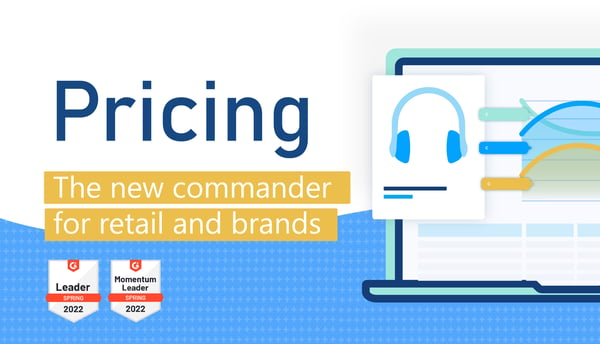
24.05.2022
Pricing as the new commander for financial growth
Figuring out a price for your product or service is not dissimilar to walking on a tightrope. On the one hand, you could purposefully overprice your product to increase profits and place your product as high-end,...
Figuring out a price for your product or service is not dissimilar to walking on a tightrope. On the one hand, you could purposefully overprice your product to increase profits and place your product as high-end, however, you may be placing the price too high, which would alienate you from the market. On the other hand, you could lower your price to make more sales, but this may result in slow profit growth and a cheaper reputation in the market. As said above, it’s a complex and technical tightrope that can sometimes result in many wasted hours spent on pricing updates and ultimately failed products and businesses. Out of all the P’s that make up the skeleton of a successful brand or retailer (product, place, promotion and price), pricing has become more and more vital to that success. Before the internet and e-commerce radically changed the way people shop, retailers could comfortably rely on this formula for financial growth. However, as e-commerce takes over physical stores and traditional shopping methods and habits, it is the pricing element of the four P’s that is showing brands the way to increased profits and scalable growth. Omnia looks at pricing as the new commander of the 4 P’s and why a particular pricing strategy - Dynamic Pricing - should be the top choice for brands and retailers. Price: The new leader of the 4 P’s Small but significant price changes have shown to be the most useful in achieving financial growth. According to a study conducted by McKinsey & Company, pricing improvements can significantly impact margins in a positive way, ranging from 2.5% to 9%, depending on the type of product and company. For omnichannel retailers, the boost was 3%. The study also found that it was pricing improvements over a reduction in fixed or variable costs that resulted in larger margin profits. This data can give brands and retailers hope that the fears or obstacles associated with price improvements, such as the risk of a competitor’s response or the risk of customers choosing not to buy, can be overcome. Despite this, many brands and retailers are still not prepared in making pricing improvements a central factor for margin boosts in the future. Going forward, only 6% of the study said that they were “very prepared” to capture the pricing opportunity and 55% said they were “somewhat prepared”. So, if brands and retailers are struggling to focus this vital element, what can they do to prioritise pricing while simultaneously learning, growing and profiting? Dynamic pricing as a solution For the average brand or retailer, both off and online, it is difficult to teach or learn dynamic pricing without a professional SaaS (software as a service) company doing the teaching and implementing. Unlike marketing, management or sales, it isn’t exactly a subject learnt at school or at any tertiary institution and there is very little reading material on it. This may explain why retailers have largely been so slow in prioritising pricing as a solution to boost profits. Dynamic pricing, as opposed to other pricing strategies, uses multiple prices for a product at various times, which are all dependent on market trends, supply and demand, a competitor’s prices, customer behaviour and internal company costs and even seasonal or weather changes. These numerous price changes are not chosen at random - in fact, it’s quite the opposite. Direct data scraping from competitors paired with third-party data from customers makes up an advanced and information-packed strategy to automate price changes, prioritise time within the business, and increase profits. How our pricing software is executed at Omnia Retail Although Omnia’s pricing software is at the helm of our unique enterprise offering, it is also our customer success division that comes part-in-parcel that sets us apart from other providers. Implementing our dynamic pricing software isn’t a rushed job that ends with our technical team leaving you, never to be seen again. In fact, we spend approximately 68 hours spread over 8-12 weeks teaching and applying our software, sharing knowledge with your team members and getting all the necessary parts of the machine well-oiled. Our customer success approach is divided into two parts: Preparation and action. “Preparation”, which amounts to approximately 20% of the process, involves the Omnia team and the client coming to share knowledge and vital information. This includes reading shared content from Omnia including the onboarding playbook and process deck; a technical setup guide; providing us with the needed information such as product lists; and any info that came from competitor direct scraping. “Action” takes up 80% of the process and involves a more hands-on approach in getting the ball rolling. It involves processes such as defining the various roles within the project and involving all members from the technical to the creative. Other processes include portal setup, data mapping, goal planning, implementing pricing strategies, education on the software and raw data, technical management, reporting and more. Thereafter, the client goes live and their relationship with Omnia continues as they may need it. Case study: Automating and optimizing pricing for Plein.nl Plein, a Dutch online marketplace for a range of toiletries, beauty, baby, and pet products, sells their stock via their own website and on other marketplaces such as Bol.com and Amazon. The Plein team needed a pricing solution to automate and optimize their prices on their website as well as on the products being sold on marketplaces, all of which have different rules and regulations. Multiple pricing strategies were needed for both their website and third-party sites that needed to run efficiently and parallel to one another. Plein’s goal is to become the number one online marketplace for personal care, and more so, their aim is to be viewed as the least expensive option in the Netherlands. With all this in mind, Omnia took on the exciting challenge ahead. Today, Plein uses Omnia’s products to receive market insights, automate its pricing strategies and to automatically calculate change prices across the market. Using both Dynamic Pricing and Price Watch, Plein was able to receive pricing data from their competitors to better inform themselves, and all pricing across multiple platforms became automated, meaning hours spent doing manual updates was spent elsewhere. We also provided insights into the tradeoff between Plein’s margins and sales. The leaders of retail pricing solutions across Europe Price optimization has a large impact on whether profits grow or not and whether retailers can thrive. For customers, it is also vital that they receive a competitive price for a product and are not swindled. The best way to balance oneself on this slim beam is to employ the smarts of dynamic pricing.
Pricing as the new commander for financial growth
10.03.2022
For the bicycle industry, 2022 presents a continued supply chain crisis
“Those who’ve recently ordered pre-assembled bikes from industry giants like Specialized, Canyon, Trek and many others may still be waiting another year to receive their bike.” At the annual Eurobike conference where...
“Those who’ve recently ordered pre-assembled bikes from industry giants like Specialized, Canyon, Trek and many others may still be waiting another year to receive their bike.” At the annual Eurobike conference where cycling industry leaders from around the world gather to talk all things cycling, a common topic was rife among the experts: More than two years into the pandemic, the global components shortage has left bike retailers without the ability to sell complete bikes. Stemming from this, other issues like factory closures and disruptions as well as the unprecedented spike in bike orders during the height of the coronavirus pandemic have contributed to the supply chain challenges. No other period than the last two years has the industry been met with such overwhelming demand. Since 2020, as people around the world were told they’d need to be staying indoors due to strict lockdown laws, sudden thoughts of how that’ll affect their fitness or boredom levels arose. However, the demand for bikes and accessories was met with a gigantic red stop sign. Governments across Europe and Asia, where bike components are primarily manufactured and more importantly shipped from, reluctantly had to make the call for factory closures. As Mike Sinyard put it, founder of Specialized bikes, 99% of a bike can be complete, but if one small part is missing, the bike cannot be shipped. This has resulted in a backlog so long, it could take 12-24 months for a customer to receive their bike order. Expected growth rate of 8.2% per year globally from 2022 to 2030 Despite the delays customers are experiencing in receiving their bikes, the industry is projected to continue growing at a growth rate of 8.2% per year globally from 2022 to 2030. In the US, expected growth will follow a similar trend. How does this affect the likes of Specialized’s new pre-assembled bikes range for home delivery? As of February 2022, Specialized launched two new ways that customers can purchase bikes: Firstly, the Ship to Home program allows people to order a pre-assembled bike and have it delivered to their homes. Secondly, a Specialized Delivery program lets customers purchase a bike off the website and a local Specialized retailer delivers it to their door and gives you technical support in setting your bike up. Both of these shopping options require the bikes to be fully assembled, needing every last nut and bolt for completion. Specialized’s Vice President, Robert Margevicius said in March of last year that although they have experienced a 35% surge in bike orders, lead times have been exacerbated from 30-60 to 300-400 days for certain parts like the wheels, suspension and contact points. If sales are not made on the spot then customers will more than likely get impatient and cancel their order. So, with this in mind, any excitement within cycling companies that may have experienced a large spike in orders, may need to be heeded if customers can so easily back out due to delays. Even electric bikes, or e-bikes, are not immune to the component shortage. Claire Fleischer, CEO of Bosch e-bikes, said in September 2021 that they “have had a hard time since last year to handle the shortages” and that they “expect these to increase even more in the next 12 to 18 months”. On the manufacturer’s side, frustration is also felt One may ask, why don’t manufacturers simply make more parts to expedite the problem? However, this doesn’t solve the other issues along the supply chain route. Japanese manufacturer Shimano, who owns 70% of the market across key components, has factories in Malaysia, China and Singapore which were hit with lockdown measures in 2020 and 2021. However, that isn’t the only speed bump in the supply chain. The rising cost of shipping containers and their scarce availability are causing delays too. Container turn-around times from Europe to Asia are slow due to port congestion in Europe and the US, which is the conclusion of research organisation Fraunhofer Center for Maritime Logistics and Services (CML) who began studying supply chain issues in 2020 with Container XChange when Covid-19 arrived. Containers are spending more than 50 days in the ports of UAE countries, the UK and the US, which delays the containers getting back to Asia to collect more bike parts. In comparison, containers are spending only five days in Chinese ports. Because of this, planning has become nightmarish for bike brands and container companies are taking advantage of the pandemonium by increasing their prices. If companies don’t order a container and a ship in advance, more delays are expected. On the costs side of things, the price of containers increased almost nine times from 2019 to 2022. In July 2019, one 40 ft (12.2 metres) shipping container cost just over $1,000. In July 2021, the same container costs over $9,000, a cost that will eventually be passed on to the consumer. Alternative solutions have been used, including air freight, but at a greater expense. With the recent Russia-Ukraine conflict and sanctions placed on Russia by the US, UK, EU and some Asian countries, one would question if this already-strained solution is even an option. Russian aircrafts that move cargo from Asia to Europe have had to halt operations due to the closing of Europe’s airspace to all Russian aircrafts. EU air freight companies like Finnair are also suffering, saying moving cargo between Asia and Europe is much more difficult and expensive when having to move around Russia. Other air freight companies who can fly in European airspace are now more in demand and have increased their charges. Rail may no longer be a safe or trustworthy alternative as cargo travelling from Asia to Europe largely goes through Russia. Alternatively, Russia may cease train operations altogether. Some positive trends to look forward to One-size-fits-all bikes are making a comeback Before the Covid-19 supply chain issues caused customers to have to choose their second, third or fourth bike choices - or none at all - bike riders could choose between specialised bikes for road, mountains, long-distance or ride trails. Now, bike brands are creating do-it-all bikes for multiple terrains so that you can get the most out of your bike. An increased interest in e-bikes More and more bikers or people new to biking are choosing electric bikes to train on or commute with. They’re becoming more affordable, and advances in output, battery life and speed are improving. E-bike sales are growing at such a pace that they may outpace sales for standard bikes in the next year or two. Talk to one of our consultants about dynamic pricing. Contact us Talk to one of our consultants about dynamic pricing. What’s in store for 2022 and beyond? According to bike manufacturers and retailers alike, supply chain issues and extended lead times on bike purchases are expected to continue until the end of 2022, if not into mid 2023. Charlie Revard, co-owner of The Bike Line in the US says that although they have been able to produce hybrids and entry-level bikes for casual biking, their high-end bikes are still sitting without a few components due to supply chain shortages. In fact, a customer wanting a mid-range mountain bike from The Bike Line is going to have to wait until June 2023 to receive it. As we speak, the aforementioned shipping delays and container scarcity means assembled and ready-to-use bikes are either simply sitting on the ocean waiting to be unloaded or haven’t even reached the container stage yet as their shortage remains an issue. SRAM, a US bike components company based in Chicago, say that they are “producing more product than ever before, but shipping containers are scarce everywhere.” In addition, Michael Zellmann, who is SRAM’s spokesperson, said that not even hiring 500 more employees and spending millions on more equipment has curtailed the bike shortage problem. He added that their factories are working “beyond 100-percent capacity”. In the meantime, bike riders are going to have to continue using their old bike while they wait for their order but be hyper vigilant about preventative maintenance. Or, riders who want high-end bikes may have to lower their expectations and opt for an entry-level or mid-range bike. Riders also have the options of e-bikes, hybrids or even buying second hand. Online retailers should be vigilant on their stock-based pricing strategies, while brick-and-mortar stores should possibly focus on marketing bike maintenance and servicing to keep people moving through their store. At the end of the day, this is going to be won on the climb.
For the bicycle industry, 2022 presents a continued supply chain crisis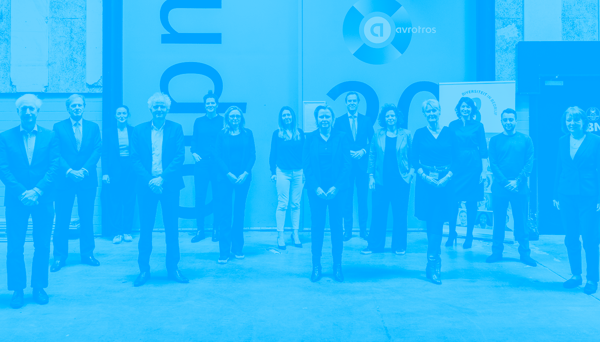
15.02.2022
Omnia signs the SER Diversity in Business charter, adding a milestone to its D&I strategy
Omnia Retail has proudly signed the SER Diversity in Business charter for equal workplace treatment, further showing our commitment to building an open and inclusive environment for all of our employees and becoming a...
Omnia Retail has proudly signed the SER Diversity in Business charter for equal workplace treatment, further showing our commitment to building an open and inclusive environment for all of our employees and becoming a part of a network of companies across the Netherlands that prioritises diversity and inclusion (D&I) within business. "This sign of approval is an important milestone for Omnia." Attending the event on 10 February 2022, our COO Vanessa Verlaan, the steward behind Omnia’s company culture, officially signed the declaration and took part in a panel discussion with other company leaders. “This sign of approval is an important milestone for Omnia and shows that we prioritise inclusion, diversity and equality in our culture.” says Verlaan. When asked why company culture is important, Verlaan said, “Our company culture defines us and sets us apart. Next to our great products, it is our strong culture that attracts and retains talented people at Omnia.” "Different backgrounds, perspectives, experiences are needed to stimulate creativity and innovation." Omnia’s D&I strategy extends into its core values as a company: Never stop learning; obsession with excellence; and free to be you and me. When explaining the purpose of Free To Be You and Me, Verlaan says that it is about allowing employees to feel free to bring their best self to work. “Different backgrounds, perspectives, experiences are needed to stimulate creativity and innovation. We want everyone to be themselves and to be respected no matter who they are or where they come from.” Setting an inclusive company culture is not the responsibility of one team or person, but an achievement we all take ownership for, as Verlaan explains: “Everyone is invited and expected to be a cultural ambassador at Omnia from day one.” To ensure that Free To Be You and Me, along with our other two core values, is embedded in Omnia's culture, we have created a framework that emphasises the importance and expectation of living up to our core values: It starts with something very crucial, yet rather easy to implement: English is our default language in all our spoken and written communication. This helps everyone feel included and welcomed to join a conversation. Bringing in new people is impactful for any organisation, especially for a scale-up. We ensure that new joiners match our inclusive mindset by focusing on value fit during the interview process. This has led to a truly diverse culture with over 20 different nationalities. D&I forms an important part of our quarterly employee survey, in which we ask for feedback on how the company is handling D&I. In addition, our core values are addressed in performance reviews, internal communications and one-on-one meetings as a part of our threshold in achieving success. "You need to prioritise it throughout your entire organisation, and live up to it every day.” Omnia recently took a look at D&I programs in companies across Europe to see what we - and others - can learn from the successes and shortcomings of others. Globally, European companies are doing good work in prioritising D&I programs. Over 7,000 global companies were tracked by the Thomson Reuters Diversity and Inclusion Index and 8 out of the top 10 most diverse companies in the world were European. Verlaan notes with sound advice for other companies: “In order to create, develop and keep the culture you have envisioned for your people and the company, you need to prioritise it throughout your entire organisation, and live up to it every day.”
Omnia signs the SER Diversity in Business charter, adding a milestone to its D&I strategy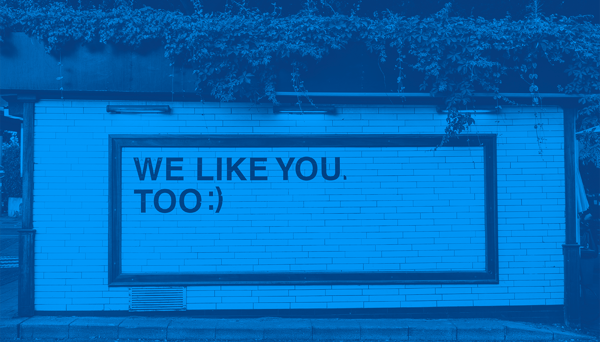
08.02.2022
Omnia's 2022 Diversity Efforts: Are EU Businesses Keeping Up?
The global coronavirus pandemic has peeled back the curtain on a number of trends and problems within the global workforce, a major one being the importance of diversity and inclusion within companies. More so, in 2021,...
The global coronavirus pandemic has peeled back the curtain on a number of trends and problems within the global workforce, a major one being the importance of diversity and inclusion within companies. More so, in 2021, 50% of employees felt that discrimination is affecting their ability to be promoted or fairly compensated. However, discrimiation is not a new issue. It has been around in business since business first began. What we now call diversity and inclusion (D&I) started off as equal employment laws and affirmative action in the 1960s. So, in 2022, how is inclusion in the workplace being addressed? As we at Omnia further drive diversity and inclusion in our workplace, we have noted a few key points that should not be overlooked. How can one structure D&I programs to last in the long run, and not just become a flash in the pan? Think of D&I programs as a pyramid: The top is about leadership - the C-suite and senior management - that needs to enforce these programs with a trickle-down effect. They need to have the vision while taking accountability for the maintenance and governance of the program. In the middle is structural and behavioural inclusion that covers inclusive practises and structures as well as open-minded decisions and mindsets. The foundation of the pyramid, which is the bulk of it, should represent a change in attitudes, company culture and outcomes that have come from within the organisation, which are often one of the most challenging aspects. D&I programs should or would typically overcome unconscious bias, accepting differences, managing diverse teams, embedding behaviours and culture, while on the legal side, non-discrimination and regulatory compliance which covers the laws and codes of conduct set up to ensure equality. D&I in Europe, today Concluding in September 2021, PricewaterhouseCoopers (PwC) released a report on the state of diversity and inclusion, surveying more than 970 corporations in 26 industries across 19 countries in Europe. Overall, the results show that although many European businesses have stated a commitment to focusing on and expanding their D&I efforts, there is still a lot of opportunity to be gained from ensuring equal opportunities within companies, no matter of race, gender, sexual orientation, nationality and/or religion. According to PwC, D&I programs should have four basic levels in order for them to be fully implemented, and a similar approach was used within Omnia Retail: Phase one — Understanding the Facts of Today: Taking a hard look at the current state of D&I at the company today. Phase two — Building an Inspirational Strategy: Creating a plan that will drive D&I goals for the future. Phase three — Developing Leadership Engagement: Getting senior management to drive D&I goals. Phase four — Creating Sustainable Movement: This is the highest level of maturity for the program. Executing real-world results that see employees experience the positive results of the program. How well are D&I programs being implemented? Out of the surveyed organisations, only 2% reached the highest level of maturity, which is the fourth phase, when compared to PwC’s levels of D&I integration. An overwhelming majority of 54% of respondents felt that D&I programs remained in the basic stages of maturity in phase one; 18% felt that their companies fell short on D&I efforts around the second phase; and 25% felt it was the third phase where efforts stagnated. That’s in comparison to the 76% that stated D&I was a core value. More than half of companies, 60%, are using D&I as a strategy for two reasons: To attract and keep talent; and a few to simply comply with legal requirements. While there is a small group only using the guise of D&I programs to prop up their stature or prominence or to appease the expectations of customers. A greater number are utilising D&I programs for the growth of the business and their employees, a welcoming sign of adoption. Diversity, inclusion, and now equity As the workplace evolves so do the ways in which we expect these spaces to be safe, comfortable, welcoming and fair environments for employees that occupy these spaces. More recently, D&I programs are starting to include equity, which is the crux of the equation that ensures impartiality and that processes provide fair and equal outcomes for all employees. It’s not just enough to make employees feel accepted for who they are or where they come from - they must be able to work with the knowledge that no matter who they are, it has no impact on their progression within the company. Catalina Colman, the Director of HR and Inclusion at Built In, an online portal for young professionals looking to enter the tech or ‘SaaS’ environment , says that “equity takes into account the fact that not everybody is starting at the same level.” Colman continues to use the example of applying for a home loan at the bank: Although the bank may vow to not discriminate based on race, gender or ethnicity, that doesn’t account for an applicant’s existing debt, socioeconomic status, domestic issues, unique living arrangements or student loans. Equity “is about levelling the playing field so the barriers to entry are the same for every single individual”. A double-edged sword According to the surveyed companies, there are little to no drivers for senior management and the C-Suite to implement D&I programs. Only 10% said their performance evaluations of and annual salary increases for senior management are affected. 40% of respondents said that neither employees or senior management are tasked with D&I responsibilities. However, although looking at the results of PwC’s 2021 survey is helpful in understanding where some companies are going wrong in terms of D&I efforts, we should not discount the many companies across Europe making great strides in diversifying their teams and moulding open-minded and accepting company cultures. Across 7,000 companies tracked worldwide on the Thomson Reuters' Diversity and Inclusion Index, European companies top the list for having the most diverse teams. In fact, 8 out of 10 of the most diverse companies in the world are European. In November 2018, leaders from more than 50 European companies signed the European Roundtable of Industrialists’ pledge to implement D&I strategies and by 2019, that number increased to more than 700 European companies being listed on the Financial Times’ annual list of diversity leaders. Looking to the future Tackling diversity may seem like a monumental task, so it may be best to start with something simple: a conversation. What’s working and what isn’t? Where are there cracks in processes and structures and who is responsible for them? A leading article in 2015 by McKinsey & Company, updated in 2021, detailed how companies not only perform better but exceed financial industry medians when they have a high percentage of racial and ethnic diversity. In addition, companies that achieved in the top quartile for gender were 15% more likely to achieve the same thing. Looking at this data, we can agree that the benefits of having diverse teams, senior managers and C-suites goes beyond what society should or would expect. Chief Operations Officer of Omnia Retail, Vanessa Bernhart Verlaan says: “Greatness and creativity start with everyone feeling free to bring their best self forward,” who is the driving force behind the company’s culture and the continuous implementation of the D&I project. One of our three core values is “Free To Be You And Me”, a company-wide focus on diversity, equity and inclusion, and with a team of employees from 12 different countries across 5 continents, we continue to see the positive effects such principles and values have at a grassroots level. Learn more about Omnia Retail via our LinkedIn page.
Omnia's 2022 Diversity Efforts: Are EU Businesses Keeping Up?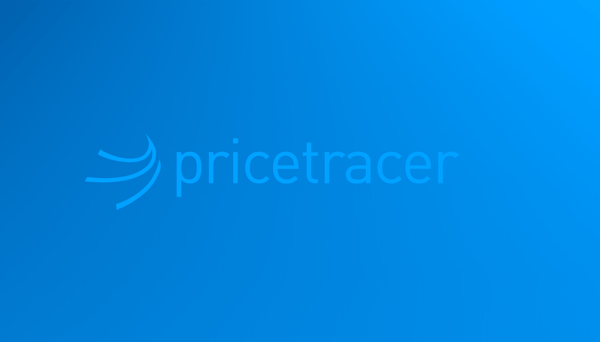
18.01.2022
Launch of a new SaaS product for brands
Pricetracer, an easy-to-use flexible pricing tool, providing control, analytics and knowledge to brands within the world of e-commerce from the new European market leader in pricing software. This Tuesday, Omnia Retail...
Pricetracer, an easy-to-use flexible pricing tool, providing control, analytics and knowledge to brands within the world of e-commerce from the new European market leader in pricing software. This Tuesday, Omnia Retail announced its launch of a new product offering for e-commerce focused brands and manufacturers: Pricetracer. "Pricetracer is a real innovation in the market for price optimisation software." The new software-as-a-service (SaaS) is a tailored made product servicing the needs of brands in the fast moving e-commerce industry. It enables brands to systematically track their product prices and retailer network across all markets in Europe. Andreas Frankenberger, CTO at Omnia, points out that: “With the decision to develop a stand-alone product like Pricetracer, we respond to the increased need for marketing and account managers of brands and manufacturers to systematically gather and analyse pricing data. All pricing tools in the market are primarily designed for retailers. In that sense, Pricetracer is a real innovation in the market for price optimisation software.” After joining forces in November 2021, the release of Pricetracer marks a major achievement for Omnia Retail and Patagona. Sander Roose, CEO of Omnia, comments: “It is great to see the combined company working on common projects right from the start. The Pricetracer is a great addition to our product portfolio, adding more value to our service, especially for our brand and manufacturing clients.” Pricetracer is a self-explanatory and easy-to-use tool. Starting with the Setup, users can implement the whole process independently. They also benefit from a flexible and transparent cost structure and have full control over all aspects of their monthly costs: selecting markets, uploading products and setting the monitoring frequency. Pricetracer enables the user to track price changes, compare price levels against the benchmark while identifying price leaders. New European market leader within the pricing software SaaS market. With constant product innovation, shared knowledge and gained expertise from Omnia and Patagona, along with some of the world's biggest brands, positions this front runner as the new European market leader within the pricing software SaaS market.
Launch of a new SaaS product for brands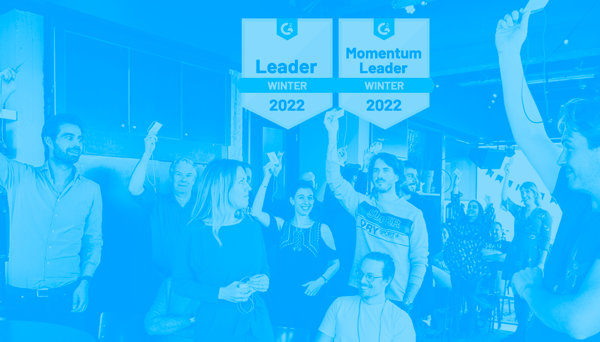
12.01.2022
Omnia achieves top position as the G2 Market Leader for 2022
Omnia Retail has been recognized twice within the G2 Grid® for 2022. Both as the momentum leader and holding the top spot within the Pricing Software segment, reaffirming Omnia Retail as the European leader. G2 is the...
Omnia Retail has been recognized twice within the G2 Grid® for 2022. Both as the momentum leader and holding the top spot within the Pricing Software segment, reaffirming Omnia Retail as the European leader. G2 is the world's largest and most trusted software marketplace for Software Services 'SaaS' and has awarded Omnia Retail with both the G2 Leader and the G2 Momentum Leader badge in the field of Pricing Software segment for Winter 2022. The award represents a lot for Omnia, its customers and future users. The ranking is based on a combination of authentic market reviews from various industry leaders as well as our presence in the market. As we move forward, this indicator highlights the successes we have had alongside our clients and points to the tremendous growth we all have achieved in a short period of time. While our customers describe our Dynamic Pricing software as the "most advanced pricing tool with the best usability" and note our "perfect service." We will not cease in continuing to innovate and further develop our software's range of features, tailored precisely to the needs of our customers, as we continue to drive towards becoming the global leader within the world of Retail and Brand Pricing Software. *Omnia Retail received 4.5 out of 5 stars from reviews published on G2.
Omnia achieves top position as the G2 Market Leader for 2022Sign up to be the first to get information from Omnia.
Sign up now